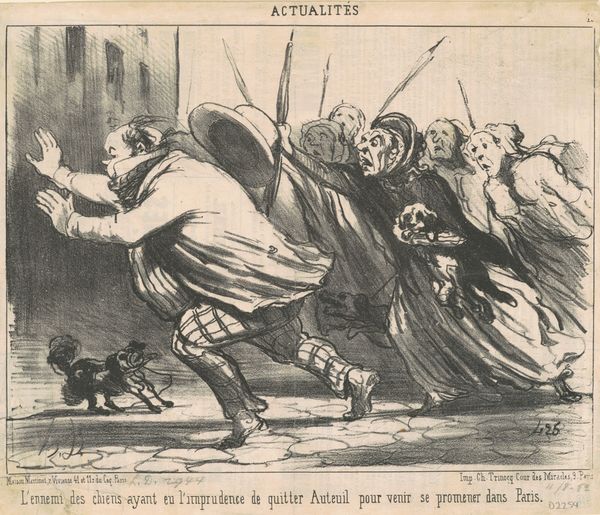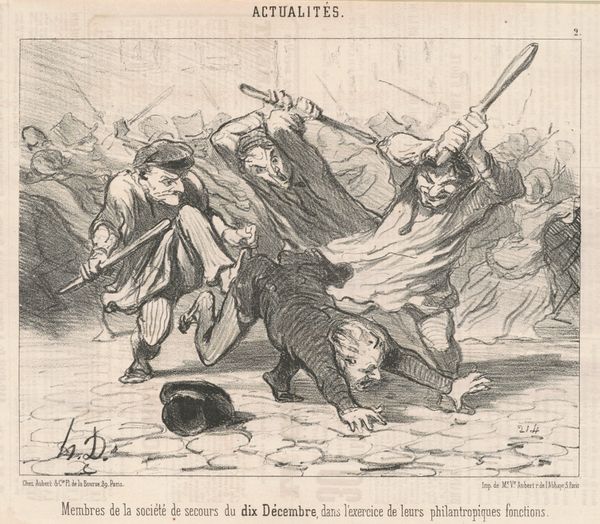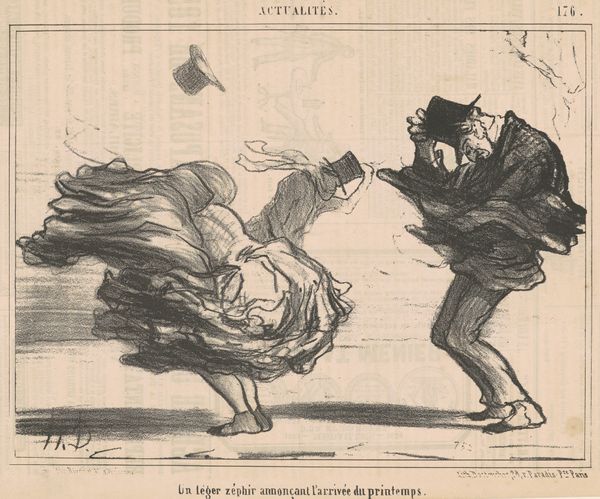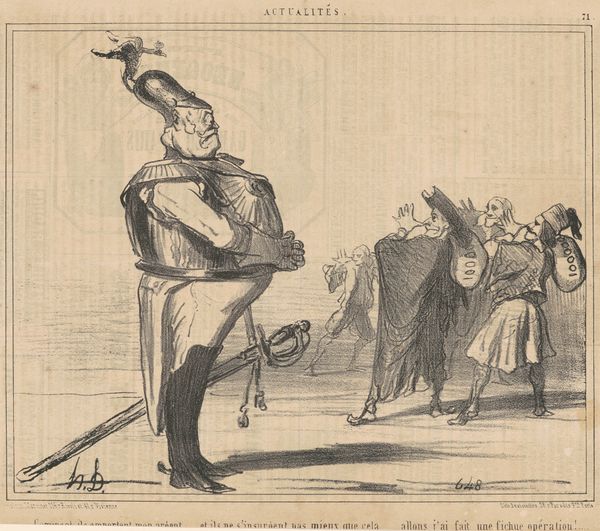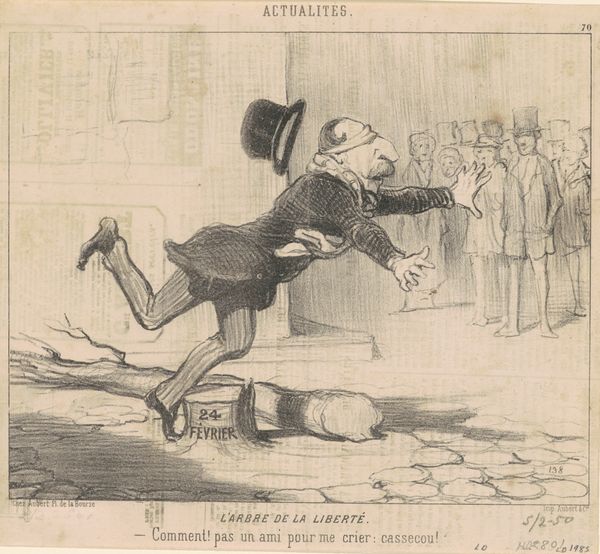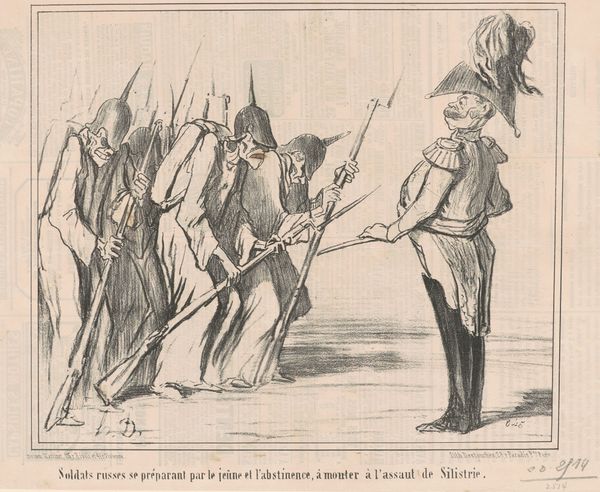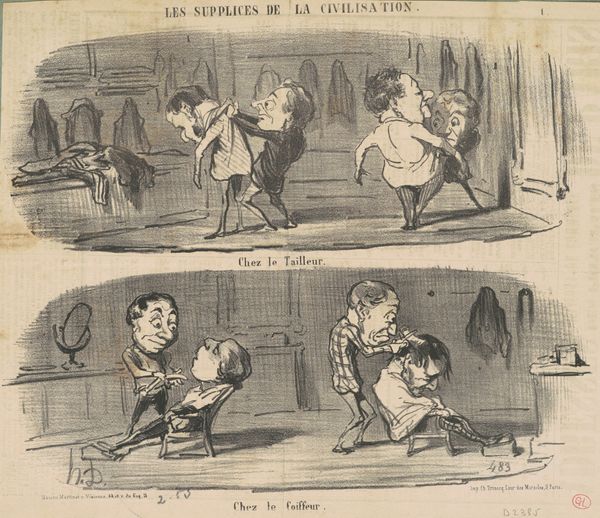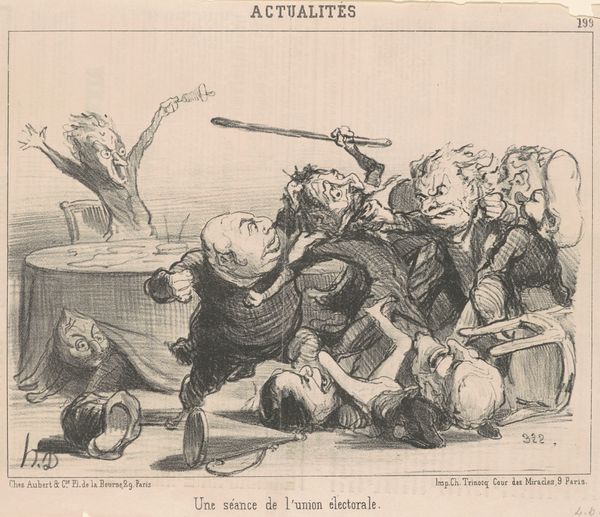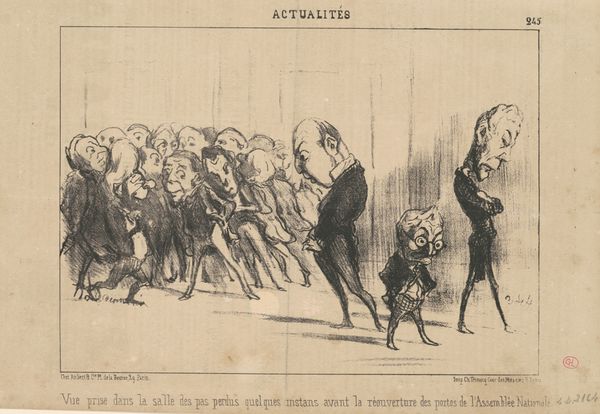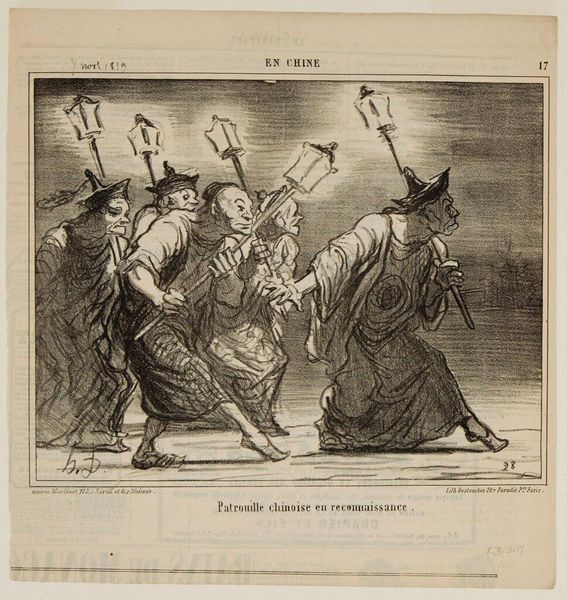
lithograph, print
#
lithograph
# print
#
caricature
#
romanticism
#
genre-painting
Copyright: National Gallery of Art: CC0 1.0
Curator: Well, I am struck, as always, by Daumier’s expressive mark-making. Look how the lithographic crayon builds texture, volume, mood. Editor: It does evoke a rather agitated scene. Very dramatic. I can almost hear the trumpets and drums announcing something dreadful! Curator: Daumier created this lithograph, known as "L'empereur Soulouque...", sometime in the mid-19th century. The title at the bottom reads "Les Horaces de l'Elysée" referencing Jacques-Louis David's famous painting. Let's unpack some of this historical context. Editor: I see the overt referencing in Daumier to that stark neoclassicism, now twisted through the lens of caricature... It's clever—how he contrasts this classical motif with something far more ludicrous. Tell me more. Curator: The print appeared in “Actualités” a regular series in “Le Charivari,”. Daumier was lampooning the emperor Soulouque. In 1849, he became president of Haiti, staging a coup shortly thereafter, proclaiming himself Emperor Faustin I. Think about how the printed format influenced Daumier’s method – it needed to be impactful but economical, easy to disseminate and easy to understand. Editor: Impactful indeed! His satire is dripping with venom here. That central figure almost appears like a swarm, menacing with its unified front, whilst on the right there is a sort of master of ceremonies celebrating... a bizarre ballet of political critique? It is unnerving and very exciting! Curator: It certainly demonstrates how Daumier mobilized caricature to make pointed arguments. And even more, to sway public sentiment through this accessible, reproducible medium. It begs the question about the use and purpose of satirical artwork and if the questions posed then still resonate today. Editor: I think that's very insightful and really lingers, but let us draw a line for our listeners here, as this remarkable snapshot of nineteenth-century France provides a whole world for speculation and reflection...
Comments
No comments
Be the first to comment and join the conversation on the ultimate creative platform.
